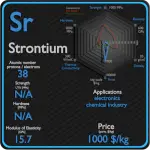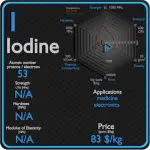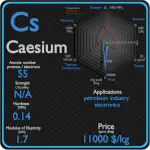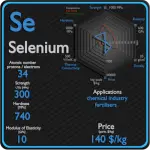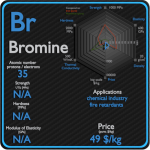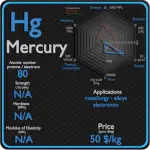This article contains comparison of key thermal and atomic properties of rubidium and iodine, two comparable chemical elements from the periodic table. It also contains basic descriptions and applications of both elements. Rubidium vs Iodine.
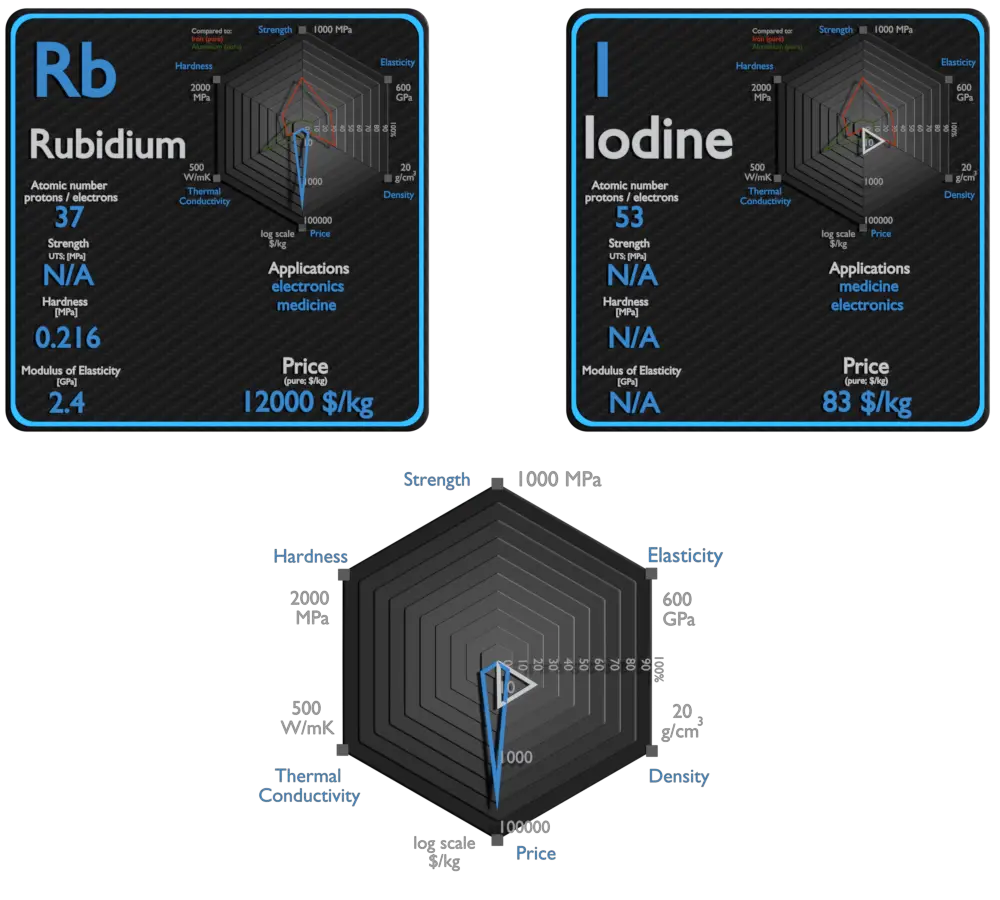
Rubidium and Iodine – About Elements
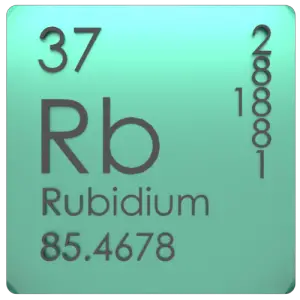
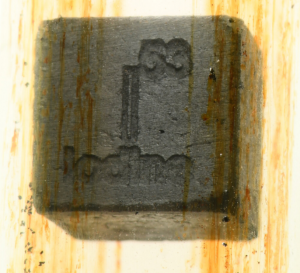
Source: www.luciteria.com
Rubidium and Iodine – Applications
Rubidium
The photoemissive property of rubidium, which is that of a surface emitting free electrons when impinged upon by electromagnetic radiation, makes possible the following applications. A rubidium-tellurium photoemissive surface is used in photoelectric cells, which are incorporated in a variety of electronic detection and activation devices. It is sensitive to a wide spectrum of radiation from the mid-ultraviolet through the visible into the near-infrared. A rubidium-cesium-antimony coating is commonly applied to the photocathodes of photomultiplier tubes. Rubidium-82 is used for positron emission tomography.
Iodine
In addition to nutrition products, iodine and iodine derivatives are used in a wide range of medical, agricultural, and industrial applications. About half of all produced iodine goes into various organoiodine compounds, another 15% remains as the pure element, another 15% is used to form potassium iodide, and another 15% for other inorganic iodine compounds. The leading application is in the production of X-ray contrast media (22%). Iodine’s high atomic number and density make it ideally suited for this application, as its presence in the body can help to increase contrast between tissues, organs, and blood vessels with similar X-ray densities. It is used as an antiseptic for external wounds. Another application driving the demand for iodine is in polarizing film in liquidcrystal display (LCD) screens.
Rubidium and Iodine – Comparison in Table
| Element | Rubidium | Iodine |
| Density | 1.532 g/cm3 | 4.94 g/cm3 |
| Ultimate Tensile Strength | N/A | N/A |
| Yield Strength | N/A | N/A |
| Young’s Modulus of Elasticity | 2.4 GPa | N/A |
| Mohs Scale | 0.3 | N/A |
| Brinell Hardness | 0.216 MPa | N/A |
| Vickers Hardness | N/A | N/A |
| Melting Point | 39.31 °C | 113.5 °C |
| Boiling Point | 688 °C | 184 °C |
| Thermal Conductivity | 58.2 W/mK | 0.449 W/mK |
| Thermal Expansion Coefficient | 90 µm/mK | N/A |
| Specific Heat | 0.363 J/g K | 0.214 J/g K |
| Heat of Fusion | 2.192 kJ/mol | 7.824 kJ/mol |
| Heat of Vaporization | 72.216 kJ/mol | 20.752 kJ/mol |
